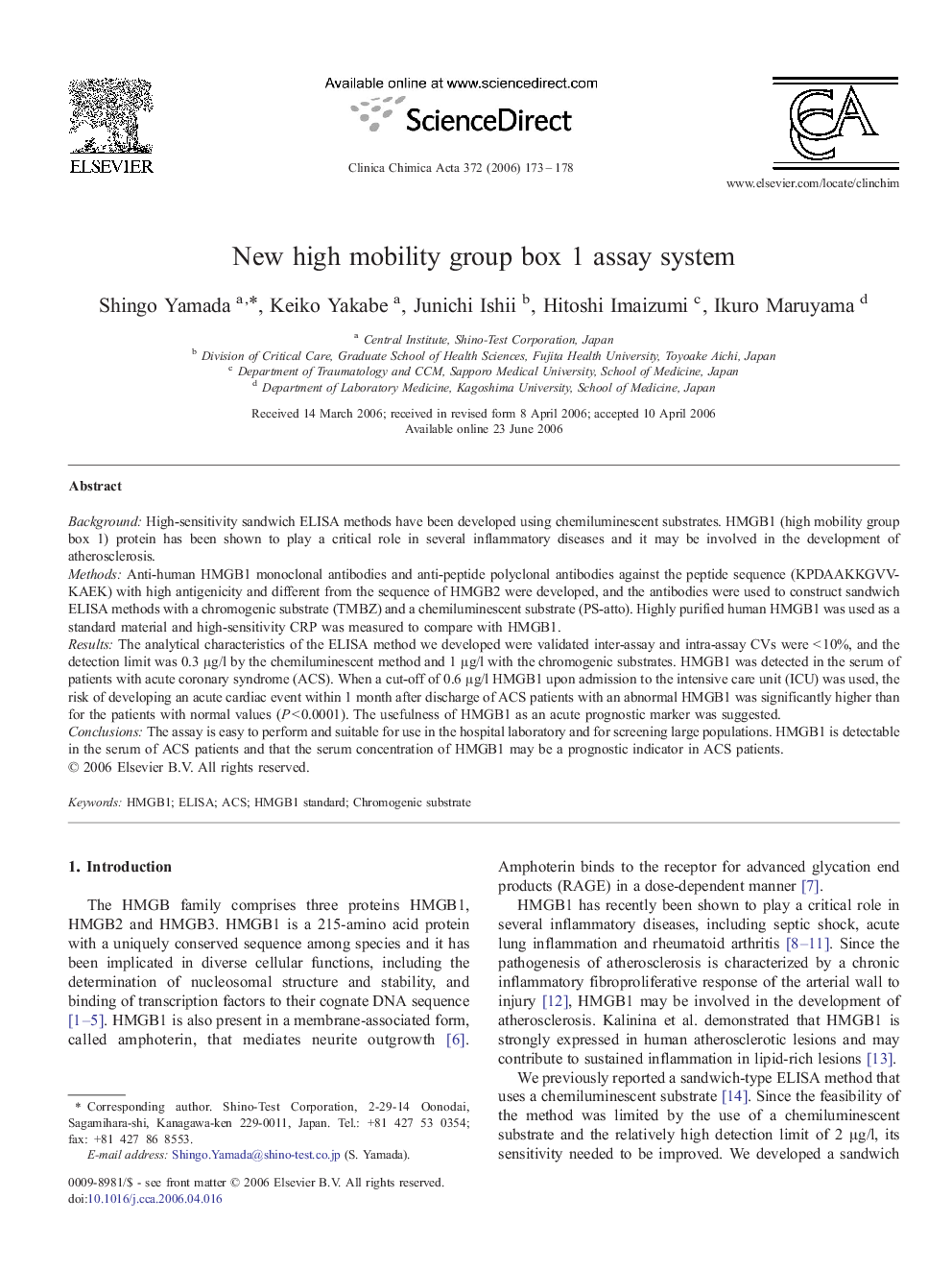| Article ID | Journal | Published Year | Pages | File Type |
|---|---|---|---|---|
| 1967752 | Clinica Chimica Acta | 2006 | 6 Pages |
BackgroundHigh-sensitivity sandwich ELISA methods have been developed using chemiluminescent substrates. HMGB1 (high mobility group box 1) protein has been shown to play a critical role in several inflammatory diseases and it may be involved in the development of atherosclerosis.MethodsAnti-human HMGB1 monoclonal antibodies and anti-peptide polyclonal antibodies against the peptide sequence (KPDAAKKGVVKAEK) with high antigenicity and different from the sequence of HMGB2 were developed, and the antibodies were used to construct sandwich ELISA methods with a chromogenic substrate (TMBZ) and a chemiluminescent substrate (PS-atto). Highly purified human HMGB1 was used as a standard material and high-sensitivity CRP was measured to compare with HMGB1.ResultsThe analytical characteristics of the ELISA method we developed were validated inter-assay and intra-assay CVs were < 10%, and the detection limit was 0.3 μg/l by the chemiluminescent method and 1 μg/l with the chromogenic substrates. HMGB1 was detected in the serum of patients with acute coronary syndrome (ACS). When a cut-off of 0.6 μg/l HMGB1 upon admission to the intensive care unit (ICU) was used, the risk of developing an acute cardiac event within 1 month after discharge of ACS patients with an abnormal HMGB1 was significantly higher than for the patients with normal values (P < 0.0001). The usefulness of HMGB1 as an acute prognostic marker was suggested.ConclusionsThe assay is easy to perform and suitable for use in the hospital laboratory and for screening large populations. HMGB1 is detectable in the serum of ACS patients and that the serum concentration of HMGB1 may be a prognostic indicator in ACS patients.
